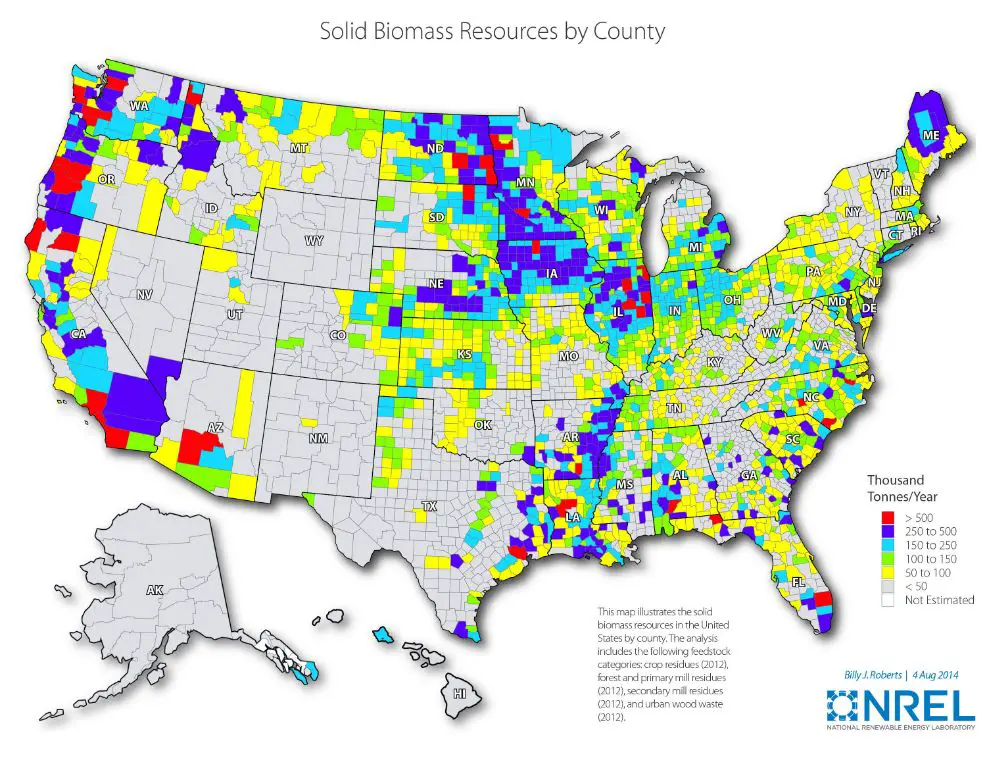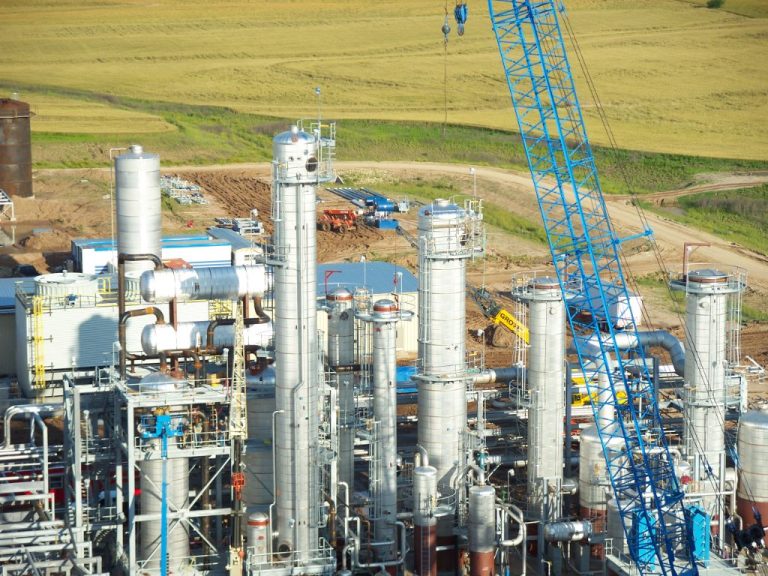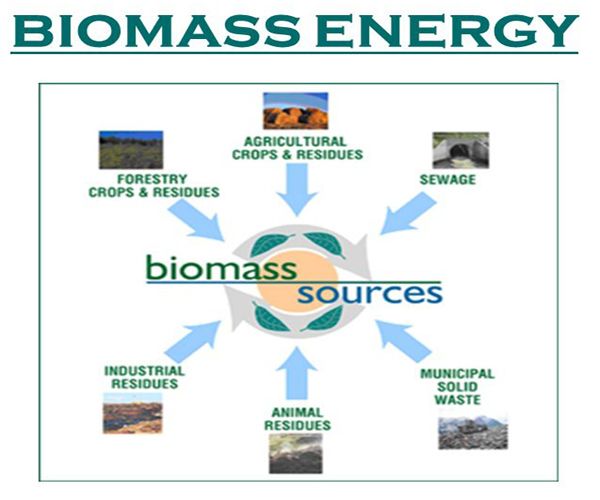Where Is Biomass Currently Being Used?
Biomass refers to organic matter that comes from plants and animals. This includes waste material from agricultural and forestry processes, such as wood chips, corn husks, and manure. Biomass also includes purpose-grown crops like soybeans, switchgrass, and poplar trees.
Biomass is considered a renewable energy source because the organic materials it comes from can be quickly replenished on a human timescale. The carbon dioxide released when biomass is burned is taken out of the atmosphere as new vegetation grows for the next harvest. This makes biomass a carbon-neutral energy source.
Using biomass for energy has become an attractive option as countries look to reduce their dependence on fossil fuels and transition to renewable energy. Biomass can provide a local and sustainable source of power generation, heating, and transportation fuel in many parts of the world.
Residential Heating
One of the most common uses of biomass is for residential heating purposes. Specifically, wood pellets have become a popular biomass fuel for home heating systems in many parts of the world. Wood pellets are made from compressed sawdust and wood shavings, and provide a low-emission, high-energy renewable fuel source.
Compared to heating oil and natural gas, wood pellets offer several benefits:

- Wood pellets are considered carbon neutral because the carbon released when burned is reabsorbed by new tree growth. This makes them much cleaner than fossil fuels.
- Heating with wood pellets reduces reliance on imported fossil fuels, improving energy independence and security.
- Pellet heating systems burn very efficiently and provide more heat output per pound compared to firewood.
- The compact pellet format makes them easier to handle, transport and store than other types of biomass.
With the rising costs of natural gas and heating oil, many homeowners are switching to wood pellet heating as an affordable and sustainable alternative. Pellet stoves and boilers are increasing in popularity throughout North America and Europe.
Industrial Heating & Power
One of the major uses of biomass is for industrial heating and power generation. Biomass can be burned directly to produce steam, which can then be used to run turbines for electricity generation. Alternatively, the steam can be used directly for industrial process heating.
Many manufacturing facilities rely on biomass boilers and combined heat and power (CHP) systems. Some examples of industries that use biomass for heating and power include:
- Pulp and paper mills
- Wood product manufacturers
- Food and beverage producers
- Chemical plants
- Textile mills
These facilities often have access to low-cost biomass waste products or residuals from their industrial processes. Using this biomass for energy maximizes efficiency and takes advantage of this inexpensive fuel source.
In addition to manufacturing, many large facilities also rely on biomass for heating and power. For example, hospitals, universities and district heating systems often use biomass boilers and CHP systems. Using locally sourced biomass improves energy security and sustainability for these institutions.
Transportation Fuels
Transportation is one of the largest consumers of energy globally, and there is growing interest in using biomass to produce renewable transportation fuels like bioethanol and biodiesel. Biofuels are replacing or blending with fossil fuels like gasoline and diesel to reduce greenhouse gas emissions from the transport sector.
Many countries have mandates in place requiring a certain percentage of biofuels in transportation fuels. For example, the United States has the Renewable Fuel Standard which requires a certain volume of renewable fuel to replace or reduce the quantity of petroleum-based transportation fuel. The European Union also has a target of 10% renewable energy in transportation by 2020.
Bioethanol is made from fermenting plant sugars from feedstocks like corn, sugarcane, or cellulosic materials. It can be blended with gasoline up to 10% for use in most vehicles. Higher ethanol blends like E85 can be used in flex-fuel vehicles. Biodiesel is produced from oils and fats and can directly replace diesel in blends up to 20%.
Using biofuels reduces lifecycle greenhouse gas emissions compared to gasoline and diesel. However, biofuel production can have sustainability challenges related to land use change, water use, and impacts on food prices that need to be managed.
Anaerobic Digestion
Anaerobic digestion is a process that uses microorganisms to break down organic waste in an oxygen-free environment, producing biogas as an end product. The biogas is composed primarily of methane and carbon dioxide and can be used as a renewable energy source.
Some of the common organic waste streams used in anaerobic digesters include animal manure, food waste, sewage sludge, and agricultural residues. These feedstocks are put into an air-tight tank called a digester, where bacteria transform the materials into biogas through a series of microbial reactions.
The nutrient-rich digestate left over after anaerobic digestion can be used as fertilizer. In addition, the biogas can be used on-site at the anaerobic digester facility or cleaned up and put into the natural gas pipeline distribution system. Common uses of biogas include:
- Generating electricity via combustion in a generator or turbine
- Providing heat for industrial processes or space heating
- Fueling combined heat and power (CHP) systems
- Powering vehicles after compressing it to make compressed natural gas (CNG) or liquefying it to make liquefied natural gas (LNG)
Anaerobic digestion offers environmental benefits such as reducing greenhouse gas emissions from landfills and livestock manure lagoons while also producing renewable energy.
Landfill Gas
Landfill gas is produced from the decomposition of organic waste in landfill sites. This gas is composed of roughly 50% methane and 50% carbon dioxide, along with small amounts of other constituents. Landfill gas is often captured and utilized as an energy source.
Specifically, the methane component of landfill gas can be collected and used to generate electricity. This is done by installing a series of gas collection wells and piping at landfill sites. The wells tap into the landfill to extract the gas, which is then piped to a central point and processed to remove impurities.
The cleaned landfill gas is then used as fuel in engines or turbines to generate electricity. This electricity often powers onsite facilities as well as being sold to the local grid. Converting landfill gas into energy offsets the need for other fuel sources while preventing the release of methane, a potent greenhouse gas, into the atmosphere.
Landfill gas projects provide the combined benefits of green power generation and reduced greenhouse gas emissions. The utilization of landfill gas to produce electricity has steadily grown in the U.S. and globally as an economical and environmentally-friendly energy solution.
Co-firing
Co-firing refers to burning biomass alongside coal at existing coal-fired power plants. Biomass and coal are burned together in the same generating unit, typically with biomass constituting 5-15% of the total fuel. Co-firing is an attractive biomass application because it reduces coal plant emissions and takes advantage of existing infrastructure.
Co-firing generates several benefits. Burning biomass reduces sulfur dioxide, nitrogen oxide and greenhouse gas emissions. Co-firing does not require extensive modifications to existing coal plants, so it provides a convenient and cost-effective emissions reduction option. The biomass fuel intake can be ramped up over time if desired. Additionally, the ash produced from burning biomass and coal together can be utilized as fertilizer.
The biomass feedstocks suitable for co-firing include wood chips, agricultural residues, energy crops, and a variety of waste materials. The reduced emission profile and ability to repurpose existing facilities make co-firing an appealing current use of biomass.
Future Outlook
The future looks bright for increased biomass usage around the world. Many countries have set ambitious renewable energy targets, with biomass expected to play a major role in meeting these goals. Projections estimate that biomass use for energy could double or even triple globally by 2030.
Several key factors are contributing to the positive outlook for biomass:
– Cost competitiveness – In many markets, biomass is becoming cost competitive with fossil fuels, making the economic case for switching stronger.
– New technologies – Advanced technologies like biomass gasification, pyrolysis, and torrefaction are unlocking greater efficiencies in utilizing biomass.
– Increasing investments – Governments, companies, and investors are ramping up investments into biomass projects and infrastructure.
– Supportive policies – Countries around the world are enacting more policies supportive of biomass and renewable energy in general.
– Decarbonization goals – Many countries have set aggressive economy-wide decarbonization targets, which biomass can help achieve as a lower carbon energy source.
With these favorable dynamics, biomass is poised for significant growth globally as a renewable energy source and potential pillar of a low-carbon future.
Challenges
While biomass offers many benefits as an energy source, there are some challenges to overcome. Two key challenges are sustainability concerns and cost effectiveness.
On the sustainability front, biomass production must be managed carefully to avoid depleting soils, destroying natural habitats, and displacing food production. There are concerns about the carbon neutrality of biomass when emissions from harvesting, processing and transporting the fuel source are factored in. Sustainable practices like using waste residues, harvesting from sustainably managed forests, and efficient processing methods can help address these sustainability issues.
In terms of costs, biomass generation can be more expensive upfront compared to fossil fuels. The fuel collection and pre-processing add to the costs. However, costs are coming down as technologies advance and scale increases. With proper site selection, efficient systems, and consideration of all economic, social and environmental factors, biomass can be a viable and cost-effective energy solution.
Conclusion
In conclusion, biomass is an important and versatile renewable energy source that is currently being utilized in several key areas. The main uses of biomass include residential heating, industrial heating and power generation, transportation fuels, anaerobic digestion to produce biogas, and landfill gas capture. The future outlook for biomass looks promising, as many countries aim to increase their use of renewable energy. However, some challenges remain in terms of sustainability and scalability of biomass resources.
Biomass can provide a sustainable energy solution when proper practices and safeguards are implemented, such as using waste materials or growing energy crops responsibly. With continued technology improvements and responsible policies, biomass has the potential to play a substantial role in the global renewable energy mix. This overview summarizes the current uses of biomass energy and highlights its versatility and potential going forward.





